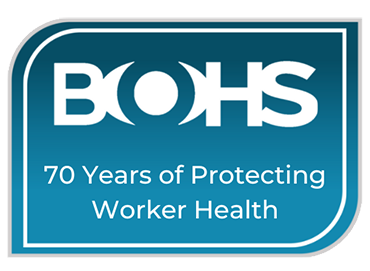The modern workplace is a melting pot of diverse materials, each with unique properties. However, their usefulness can be overshadowed by the potential for harm if mishandled. This necessitates robust protocols for identifying and managing risks associated with hazardous substances, ensuring the well-being of employees.
This article delves into the cornerstone principles of workplace safety, drawing upon the invaluable guidance provided by the Health and Safety Executive (HSE) and the Control of Substances Hazardous to Health (COSHH) regulations.
Identifying Hazardous Substances: The First Line of Defence
The initial bulwark against occupational hazards lies in effectively identifying hazardous substances within the workplace. Here, a multi-pronged approach proves most effective:
- Globally Harmonised System (GHS) Pictograms: These standardised symbols adorning product labels act as the first line of defence. Instantly recognisable icons, such as the skull and crossbones for acutely toxic substances or the flame for flammables, serve as a visual alert to potential dangers.

- Safety Data Sheets (SDS): A comprehensive safety data sheet (SDS) accompanies every hazardous substance. This document serves as a critical repository of information, meticulously outlining the physical and health hazards associated with the substance, alongside safe handling procedures and essential first-aid measures. It is imperative to ensure that SDS are readily accessible to all workers.
- Hazard Awareness Training: Empowering workers through comprehensive hazard awareness training equips them to recognise early warning signs and fosters a profound understanding of the specific risks inherent to the materials they handle. This knowledge empowers them to make informed decisions that safeguard their health and the well-being of their colleagues.

Mitigating Risks Through a Hierarchy of Controls:
The COSHH framework advocates for a tiered approach to risk mitigation, prioritising the elimination of hazards altogether. This ideal scenario, however, may not always be practicable. In such situations, the hierarchy prescribes a series of control measures, implemented in a cascading order:
- Engineering Controls: These controls aim to isolate the hazard at its source, effectively minimising worker exposure. Examples include local exhaust ventilation (LEV) systems to remove airborne contaminants or enclosed handling systems for highly toxic substances.
- Administrative Controls: These controls focus on altering work practices and procedures to minimise exposure. Examples include job rotation to reduce cumulative exposure times, the implementation of designated smoking areas, or the enforcement of strict personal hygiene protocols.
- Personal Protective Equipment (PPE): PPE serves as the final line of defence, acting as a barrier between the worker and the hazard. The specific type of PPE required hinges on the nature of the hazard. Respiratory protection may be necessary for airborne contaminants, while chemical-resistant gloves and safety glasses offer protection against splashes and spills. For situations with excessive noise, ear defenders are crucial in safeguarding hearing.
HSE and COSHH Guidance for Specific Hazard Groups:
The HSE and COSHH provide specific and invaluable guidance for the safe handling of various hazardous substance groups:
- Explosives and Flammables: These volatile substances necessitate secure storage in designated, well-ventilated areas situated away from potential heat sources. Stringent protocols for handling and disposal are paramount.
- Oxidising Agents: These substances readily promote combustion. Segregation from flammable materials and the implementation of measures to prevent sparks or friction are essential safety measures.
- Compressed Gases: The pressurised nature of these substances necessitates secure storage of cylinders and the provision of proper handling training to minimise the risk of accidents.
- Toxic Substances: The inherent toxicity of these substances necessitates the minimisation of manual handling. The prioritisation of containment measures, such as closed handling systems, is crucial in safeguarding worker health.
- Corrosive Substances: These substances can inflict severe tissue damage upon contact. Designated storage areas with robust spill containment measures are essential. Workers must be provided with acid-resistant PPE for handling.
Remember:
- Regularly consult the most recent HSE and COSHH guidance to ensure adherence to the latest regulations.
- Different countries or regions may have their own regulations regarding hazardous substances. Remain informed of any local variations.
- Promptly report any spills or accidents and follow established procedures to minimise the potential for harm.
- Maintain a clean and organised work environment to reduce the likelihood of accidents.

-1.png)









